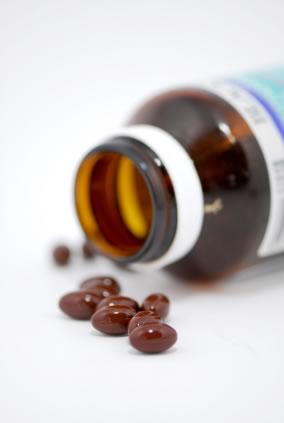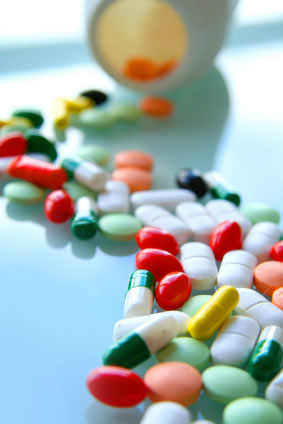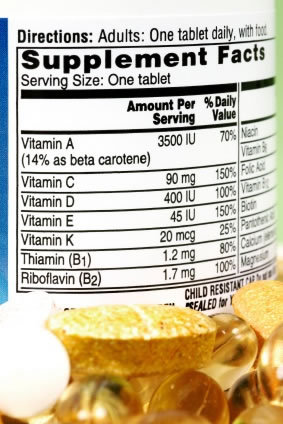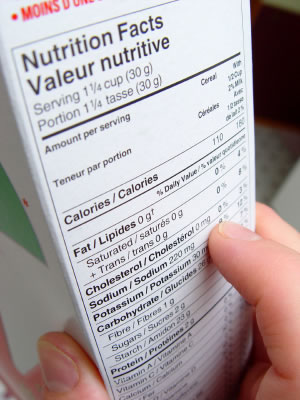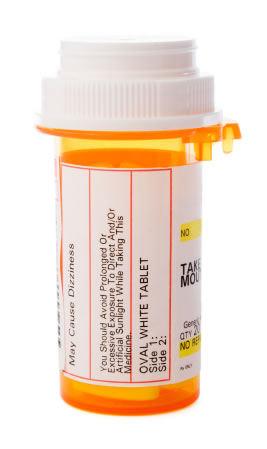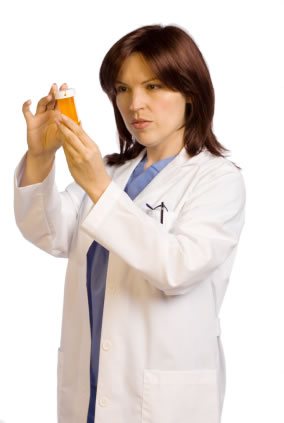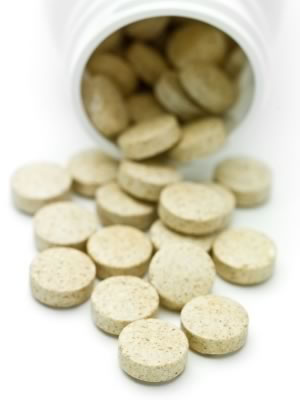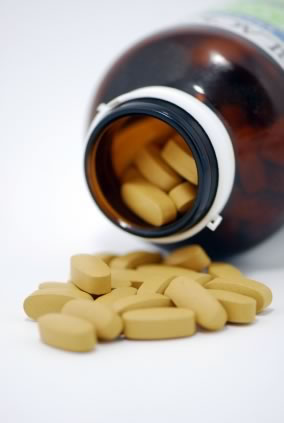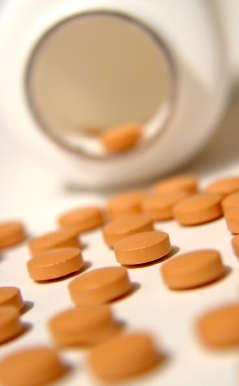The B Vitamins are a group of eight water-soluble vitamins that perform many important cell and body functions. Since these vitamins perform so many important functions they are essential for good health. This group of vitamins is also known as B-Complex. Because these vitamins are water-soluble they are not stored in the body. What this means is that B vitamins must be replenished each day.
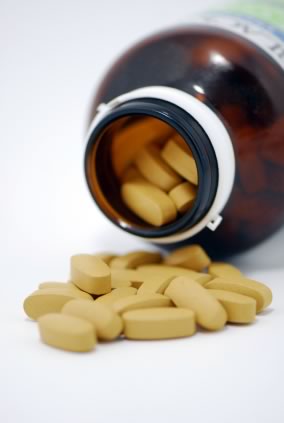
B-vitamins are widely available naturally from both plant and animal sources and are also added to many foods such as cereals. A regular healthy, balanced diet usually supplies the appropriate amount of B Vitamins to support proper body functioning. If this is not the case, supplements are also available. Supplements are offered both individually and in a B-Complex supplement which includes all eight B vitamins. The following is an overview each of these eight B-vitamins.
Vitamin B1
Also identified as: Thiamin
Benefits
Vitamin B1 improves circulation, supports blood formation, aids in carbohydrate metabolism, and is necessary to produce hydrochloric acid, which helps digest food. It also helps to maintain the normal red blood count, and promotes healthy skin. It protects against the damaging effect of lead poisoning, and prevents edema or fluid retention in connection with heart ailments. Supplemental thiamin can help protect against some of the metabolic imbalances caused by heavy alcohol consumption. It may help protect against Wernicke’s encephalopathy. This condition is a form of brain damage seen in some alcoholics.
Sources
The greatest food sources of vitamin B1 are yeast, brown rice, egg yolks, legumes, liver, nuts, peas, poultry, rice bran, dulse, kelp, spirulina, wheat germ and whole grains. Vitamin B1 is also found in fortified breads, cereals, pasta, lean meats, fish, dried beans, peas, and soybeans.
Deficiency Symptoms
Since vitamin B1 is required for the metabolism of carbohydrates, fats and proteins, a vast array of symptoms can develop due to deficiency. These symptoms can develop in multiple body systems including the gastrointestinal system, causing indigestion and constipation, and the central nervous system, causing reduced alertness, nerve irritation, pain, numbness and weakness. Cardiovascular symptoms can include weakening of the heart muscles, causing edema in the lower limbs and difficulty breathing. Deficiency in the U.S. is mainly seen in people who abuse alcohol because alcohol prevents the body from absorbing the vitamin properly.
Recommended Daily Allowance of Vitamin B1
Men – 1.5 mg., Women – 1.1 mg., Pregnant women – 1.5 mg., Children – 1.1 mg.
Vitamin B2
Also identified as: Riboflavin
Benefits
Vitamin B2 helps prevent and is used to treat migraine headaches, cataracts, rheumatoid arthritis, and a number of skin disorders such as acne, dermatitis, and eczema. In the treatment of anemia, adding Vitamin B2 to iron supplements has shown to increase its effectiveness. This vitamin is particularly helpful in counteracting the tendency towards glaucoma.
Sources
High levels of Vitamin B2 are found in the following foods: cheese, egg yolks, almonds, organ meats, whole grains, wild rice, soybeans, milk, spinach, mushrooms, almonds, and poultry. Vitamin B2 is usually added to cereals and flour products. Keep these foods stored away from light to protect vitamin content.
Symptoms of Deficiency
Vitamin B2 deficiency has a great effect on the metabolism of carbohydrates, fats, and protein. All three of these basic food elements require Vitamin B2 if they are to be properly used by the body. A deficiency of this vitamin results in symptoms such as burning and itching of the eyes. Blurring of vision may also occur. The lips also become dry, chapped and sore. The first signs and symptoms of deficiency are a sore throat and sores at the corners of the mouth. Worsening symptoms include a swollen tongue, seborrheic dermatitis, anemia and weakened nerve function.
Recommended Daily Allowance of Vitamin B2
Men – 1.7 mg., Women – 1.3 mg. , Pregnant women – 1.6 mg., Lactating women – 1.8 mg.
Vitamin B3
Also identified as: Niacin, Nicotinic Acid, Niacinamide
Benefits
Vitamin B3 is a component in many important metabolic functions of the body. In addition, it is also used as a drug in treatment of some disorders. Vitamin B3 helps to maintain a healthy skin. Niacin dilates the blood capillary system. This vitamin is also essential for synthesis of the sex hormones, namely, estrogen, progesterone, and testosterone, as well as cortisone, thyroxin, and insulin. It also maintains mental and emotional well-being.
Sources
Vitamin B3 is found in beef liver, brewer’s yeast, lean meats, poultry, fish, eggs, cheese, soybeans, nuts, whole grains, green vegetables, cooked dried beans, and milk.
Symptoms of Deficiency
Pellagra is a disease caused by a vitamin B3 deficiency. However, it is rare in the United States. Symptoms include loss of appetite, skin rash, diarrhea, mental changes, swollen tongue, and digestive and emotional disturbance.
Recommended Daily Allowance of Vitamin B3
Men – 19 mg., Women – 15 mg., Pregnant women – 17 mg., Lactating women – 20 mg.
Vitamin B5
Also identified as: Pantothenic acid, Pantothenic Acid
Benefits
Vitamin B5 plays an important role in emotional well being. This vitamin enhances the body’s production of cortisol, a hormone that helps control stress, anxiety and depression. Vitamin B5 is also important for maintaining healthy skin, nerves, glands and muscles, and helps to maintain the digestive tract and fight allergies.
Sources
Rich sources of Vitamin B5 include liver, kidney, yeast, egg yolk and broccoli. Other good sources include, chicken, fish, milk, legumes, mushrooms, sweet potatoes and whole grain cereals.
Symptoms of Deficiency
Naturally occurring Vitamin B5 acid deficiency in humans is vary rare. However when deficient diets were fed to volunteers the following symptoms were observed: loss of appetite, indigestion, abdominal pain, headache, fatigue, mental depression, sleeplessness, numbness and tingling of hands and feet.
Recommended Daily Allowance of Vitamin B5
4 to 7 mg. for adult men and women
Vitamin B6
Also identified as: Pyridoxide, Pyridoxine
Benefits
Vitamin B6 is beneficial if you suffer from water retention, and is necessary for the production of hydrochloric acid and the absorption of fats and protein. Vitamin B6 also aids in maintaining sodium and potassium balance, which is vitally important for normal body functions. Vitamin B6 also promotes red blood cell formation. In addition, this vitamin is required for the production of hydrochloric acid and magnesium. Vitamin B6 is also known to be helpful in the treatment of allergies, arthritis, and asthma.
Sources
Good dietary sources of vitamin B6 include chicken, turkey, tuna, salmon, shrimp, beef liver, lentils, soybeans, nuts, avocados, bananas, carrots, brown rice, bran, sunflower seeds, wheat germ, and whole-grain flour.
Symptoms of Deficiency
Irritability, nervousness and insomnia as well as overall weakness, skin conditions such as dermatitis and acne as well asthma and allergies might develop when vitamin B6 is deficient. Symptoms may include nails that are ridged, an irritated tongue as well as changes to your bones – which can include osteoporosis and arthritis. Kidney stones may also appear. A deficiency of Vitamin B6 may also eventually lead to loss of muscular control, migraine headaches, diseases of old age, and premature senility.
Recommended Daily Allowance of Vitamin B6
- Infants:0 – 6 months: 0.1 milligrams per day (mg/day), 7 – 12 months: 0.3 mg/day
- Children: 1 – 3 years: 0.5 mg/day, 4 – 8 years: 0.6 mg/day , 9 – 13 years: 1.0 mg/day
- Adolescents and Adults: Males age 14 to 50 years: 1.3 mg/day, Males over 50 years: 1.7 mg/day , Females age 14 to 18 years: 1.2 mg/day , Females age 19 to 50 years: 1.3 mg/day , Females over 50 years: 1.5 mg/day
Vitamin B7
Also identified as: Biotin
Benefits
Vitamin B7 plays an essential role in the conversion of fatty acids and glucose into the fuel the body needs for energy. It also helps build and maintain muscle tissue, bone marrow and nervous system tissue. This vitamin is also thought to be beneficial to the health of skin, hair and nails.
Sources
Vitamin B7 is widely available in foods but few foods have a very high concentration. Milk, liver, egg yolk, legumes, nuts and a few vegetables are the most important sources of biotin. The natural availability of biotin varies greatly among foods.
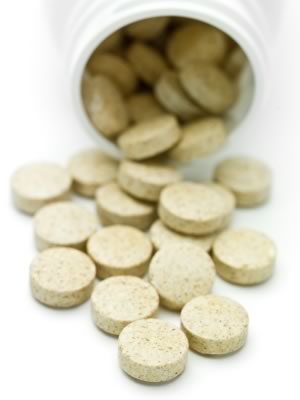
Symptoms of Deficiency
Symptoms of deficiency include loss of appetite, nausea, hair loss, and scaly red rash around the eyes, nose, mouth and genital area. Neurological symptoms include depression, lethargy, hallucination and numbness and tingling sensation in the hands and feet. Since biotin is prevalent in foods, natural Vitamin B7 deficiency is rare.
Recommended Daily Allowance of Vitamin B7
Men – 200 mcg. ,Women – 150 mcg. ,Children – 100 mcg.
Vitamin B9
Also identified as: Folic Acid, Folate, Folacin and Pteroylglutamic acid
Benefits
Vitamin B9 helps the body produce and maintain new cells. It also offers protection against certain types of cancers and is important in protection against heart disease. Folic acid is the single most important nutrient for a pregnant woman and her developing fetus. Eating a diet rich in vitamin B9 will help to ensure healthful pregnancy for woman and the delivery of a healthy baby. Folic acid also improves lactation.
Sources
Natural sources of folic acid include fresh leafy green vegetables, such as spinach and turnip greens. It is also found in whole grains, starchy vegetables, dried beans and fruit.
Symptoms of Deficiency
A sore, red tongue is one sign of folic acid deficiency. Other potential signs include anemia, apathy, digestive disturbances, fatigue, graying hair, growth impairment, insomnia, difficult breathing, memory problems, paranoia, weakness, and birth defects in one’s offspring.
Recommended Daily Allowance of Vitamin B9
Men – 200 mcg. ,Women – 180 mcg. ,Women of childbearing age – 400 mcg.
Vitamin B12
Also identified as: Cobalamin, Cyanocobalamin
Benefits
Vitamin B12 plays an important role in the production of energy from fats and proteins. Vitamin B12 is also critical to the central nervous system. It maintains the sheath that surrounds and protects nerve fibers and promotes their normal growth. Since vitamin B12 shares a close metabolic interrelationship with folic acid, it is indirectly involved in the formation of red blood cells. Other functions and benefits include its role as an oxygen carrier, metabolizing fat, improving neurological disorders, and enhancing the immune system.
Sources
The richest sources of vitamin B12 are liver, kidney, milk, eggs, fish, cheese, meats and poultry. Vitamin B 12 is not found in many vegetables; it is available only from sea vegetables, such as dulse, and kelp. It is also available in and soybeans and soy products. In addition it is present in the herbs alfalfa, bladderwrack, and hops.
Symptoms of Deficiency
A deficiency of vitamin B 12 may cause a condition called pernicious anemia. It may lead to a poor appetite and retardation of growth in children, chronic fatigue, a sore mouth, a feeling of numbness or stiffness, loss of mental energy, and difficulty in concentration. Deficiency of vitamin B12 also results in neurological symptoms such as numbness and tingling of the arms and legs, difficulty in walking, amnesia, depression, disorientation and dementia, with or without mood swings.
Recommended Daily Allowance of Vitamin B12
- Infants:0 – 6 months: 0.4 micrograms per day (mcg/day),7 – 12 months: 0.5 mcg/day
- Children: 1 – 3 years: 0.9 mcg/day, 4 – 8 years: 1.2 mcg/day , 9 – 13 years: 1.8 mcg/day
- Adolescents and Adults: Males and females age 14 and older: 2.4 mcg/day
References:

